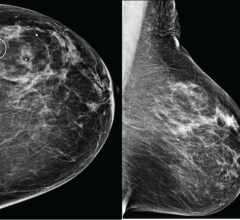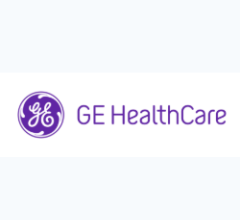
Greg Freiherr has reported on developments in radiology since 1983. He runs the consulting service, The Freiherr Group.
Three Ways CT Will Radically Change — When and How

Carotid exams using Toshiba’s Aquilion Prime minimize patient radiation dose (non-contrast 0.26 mSv, post-contrast 0.57 mSv). Sub-milliSievert scans could be the norm in the near future thanks to a Medicare ruling, slated to take effect next year. Image courtesy Toshiba America Medical Systems
The heady days of computed tomography (CT) — when 64-slice scanners drove sales to an all-time high — seems like ancient history. Hard to believe it was less than 10 years ago. Since then demand has fallen. The installed base, predictably, has grown old.
It used to be that once every four to five years, providers would turn out their old CTs in favor of new ones. Lately they have been holding on. The average lifespan of individual systems has grown, in some cases to eight, nine, even 10 years. And it could get longer.
One healthcare provider told me last week that, when purchasing its latest CT, his hospital heavily weighted the expected longevity of the system. Decision-makers there wanted to know whether and how the vendor would provide timely upgrades. Their timeframe — 15 years.
Return on investment, cost-effectiveness, efficiency and patient welfare matter more today than ever before. And they are only going to increase in importance. The reason is simple. America is moving into a new era of value-based healthcare.
It used to be the more exams, the more money a provider made. The traditional fee-for-service payment system made it that way. But no more. Better outcomes achieved at lower cost will be the calculus of the future. The Federal government, paced by the Centers for Medicare and Medicaid (CMS), is already moving in this direction.
By the end of 2018, CMS plans to have shifted half its traditional payments to alternative models. Among them will be Accountable Care Organization. ACOs are characterized by doctors, hospitals and other healthcare providers who have voluntarily banded together to provide quality care.1 Also by then CMS plans to tie 90 percent of its remaining fee-for-service payments to quality or value.
The goal is to keep Americans healthy, to get sick patients better faster and to protect the welfare of patients. New offerings from entry to premium level scanners, technologies that minimize dose, and the entry of new vendors have made CT the harbinger of this new, patient-centric age of radiology.
Next week this column will describe how Federal efforts to rein in patient radiation exposure may help give CT a much-needed facelift. The catalyst of this change will be a new ruling from CMS. Due to be released in final form within the next couple months, this ruling will dictate the use of low-dose protocols and dose tracking for CT under penalty of reduced payments for CT scans.
Thousands of scanners in this country may be rendered “borderline” obsolete in the wake of its implementation, set to happen early next year. If your CT falls into this group, as one in three in the U.S. are expected to do, is it time to panic? You’ll read why NOT.
A week later, you’ll hear about the new breed of CT scanners rolling off production lines from entry-level 16-slice to high-performance dual-energy. All provide low-dose exams. But one size does not fit all. Picking the best one will depend on gauging accurately what you need and how much you will ultimately pay. Calculating the total cost of ownership will be critical. You’ll read about the considerations to factor in; why the needs of your patients and your facility have to come first; and why any other approach is a recipe for failure.
Finally, as September draws to a close, look for this blog to describe fundamental changes in the CT industry, changes that will shape future product portfolios. The rank-and-file of manufacturers is changing. New entrants are going to shake up the status quo. You’ll read how.
Reference:
1https://www.cms.gov/Medicare/Medicare-Fee-for-Service-Payment/ACO/index.html?redirect=/ACO


 December 10, 2025
December 10, 2025 









